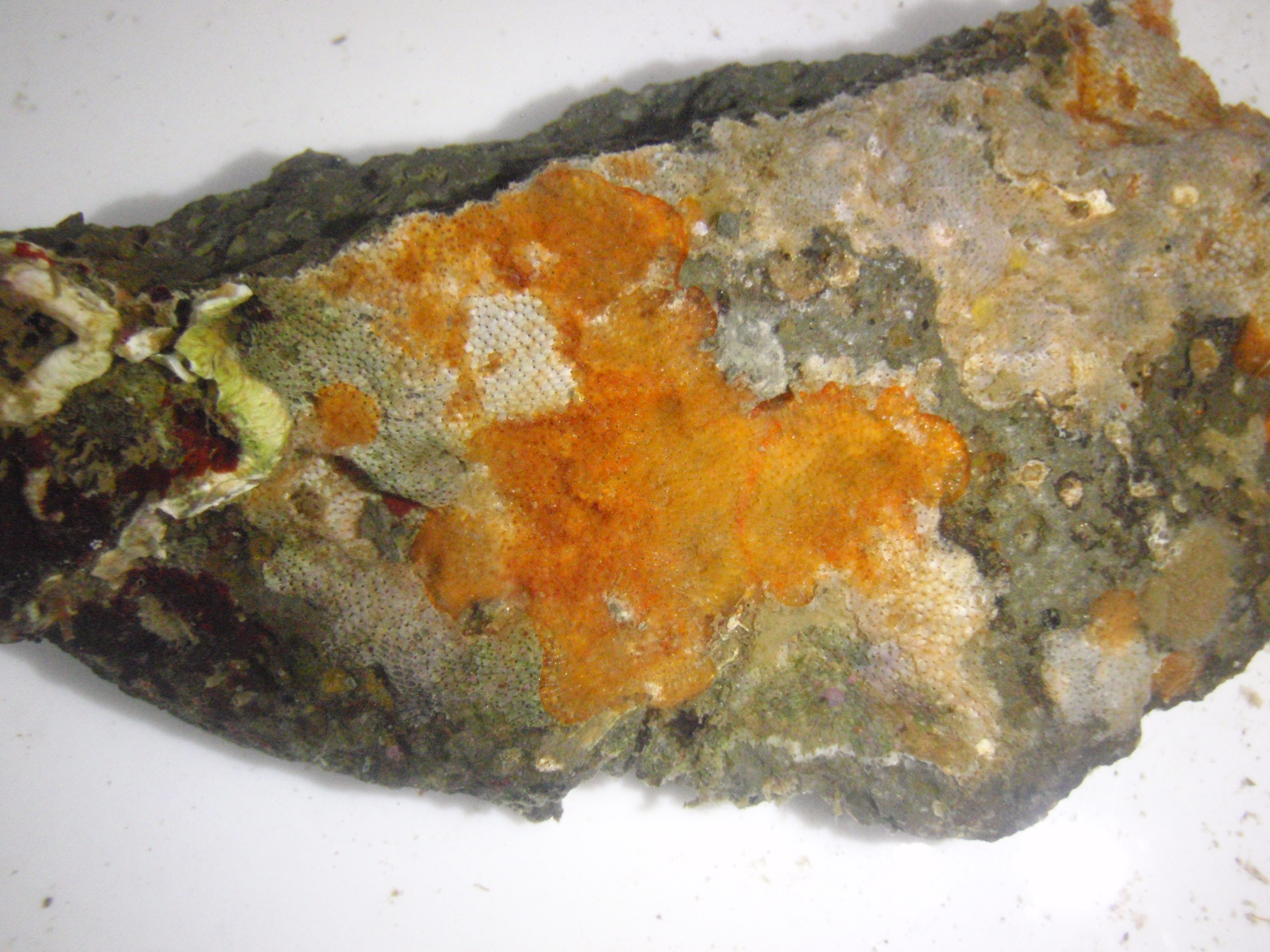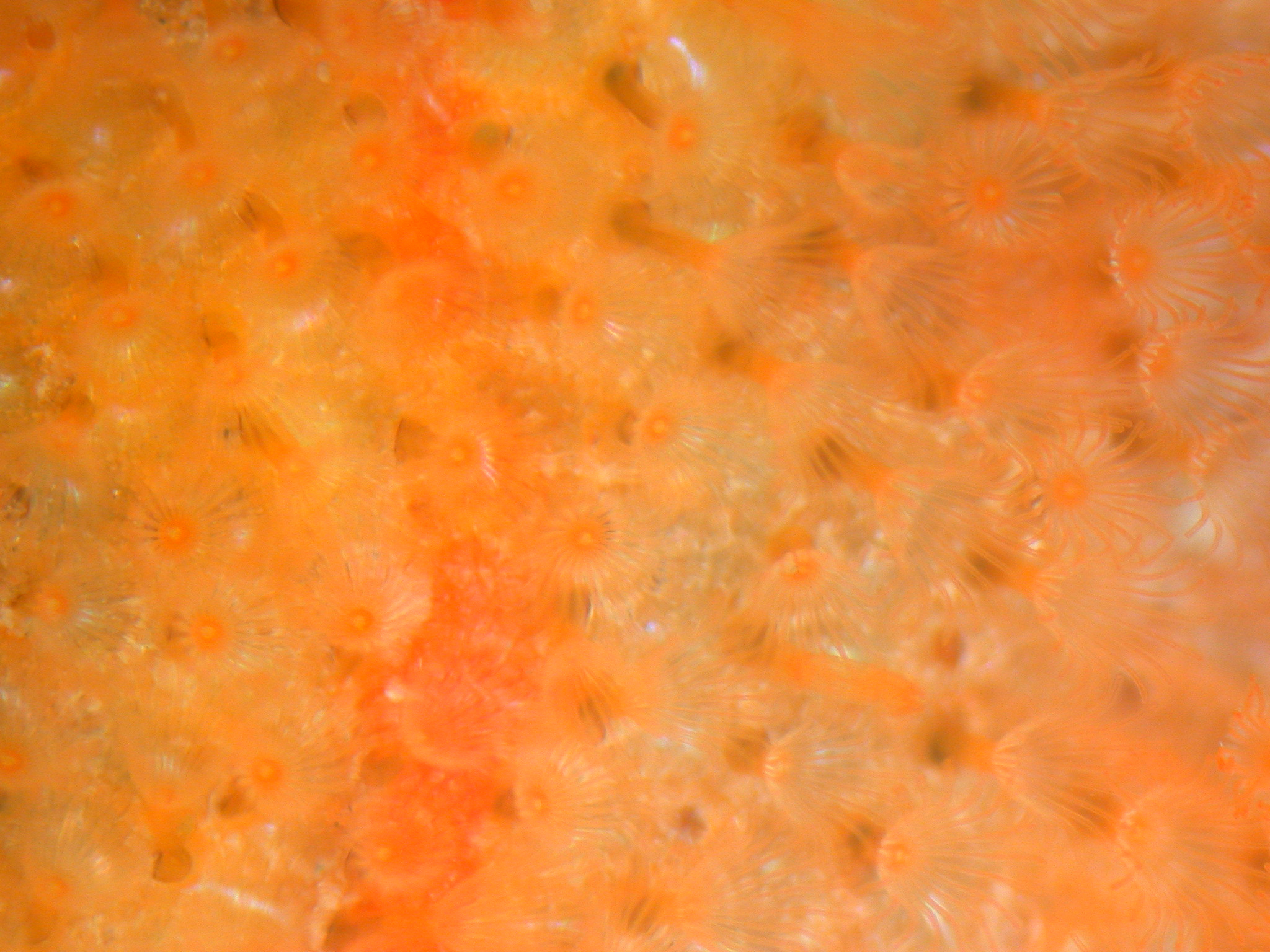A specimen was obtained subtidally at Oshoro Bay, Hokkaido, Japan, about 43°12′N, 140°51′E, on 7 June 2010 by Shohei Mori, photographed and identified by Masato Hirose as Schizoporella unicornis based on Mawatari (1965: 614, figs a–c), and fixed in 99% EtOH. DNA was extracted from the dactylus of the left 2nd pereopod using the silica method (Boom et al. 1990) with some modifications. Extracted DNA was dissolved in 30 µl of deionized water and has been preserved at –20°C. Remaining morphological voucher specimen has been deposited at the Hokkaido University Museum under the catalogue number ICHU22080316 (contact: Dr. Hiroshi Kajihara, kazi@mail.sci.hokudai.ac.jp).
An about 600-bp fragment of mitochondrial cytochrome c oxidase subunit I gene (COI) was amplified by polymerase chain reaction (PCR) using LCO1490 (5′-GGTCAACAAATCATAAAGATATTGG-3′) and HCO2198 (5′-TAAACTTCAGGGTGACCAAAAAATCA-3′) (Folmer et al. 1994). A hot start PCR was performed by a thermal cycler, iCycler (Bio-Rad), in a 20-µl reaction volume containing 1 µl of template total DNA (approximately 10–100 ng) and 19 µl of premix made with 632-µl deionized water, 80-µl Ex Taq Buffer (TaKara Bio), 64-µl dNTP (each 25 mM), 8-µl each primer (each 10 µM), and 0.1-µl TaKara Ex Taq (5 U/µl,TaKara Bio). Thermal cycling condition comprised an initial denaturation at 95°C for 30 sec; 30 cycles of denaturation at 95°C for 30 sec, annealing at 45°C for 30 sec, and elongation at 72°C for 45°C and a final elongation at 72°C for 7 min.
The PCR product was purified with the silica method (Boom et al. 1990). Both strands were sequenced with a BigDye® Terminator v3.1 Cycle Sequencing Kit (Applied Biosystems) following the manufacturer's protocol, using the same primer set as the initial PCR amplification. Sequencing was performed with ABI Prism 3730 DNA Analyzer (Applied Biosystems). Chromatogram and sequence data were operated with MEGA v4 software (Tamura et al. 2007).
Results
A total of 6xx bp of COI sequence was determined from Schizoporella unicornis (see Appendix).
Taxonomy
Order Cheilostomata
Family Schizoporellidae Jullien, 1883
Genus Schizoporella Hincks, 1877
Schizoporella unicornis (Johnston, 1874)
(Figs 1, 2)

Fig. 1. Photograph of the living, orange coloured colony of Schizoporella unicornis (Johnston, 1874) (ICHU22080316), encrusting a boulder stone.

Fig. 2. Protruded lophophores of Schizoporella unicornis (Johnston, 1874) (ICHU22080316).
References
Boom, R., Sol., C. J. A., Salimans, M. M. M., Jansen, C. L., Wertheim-van Dillen, P. M. E., and van der Noordaa, J. 1990. Rapid and simple method for purification of nucleic acids. Journal of Clinical Microbiology28: 495–503.
Folmer, O., Black, M., Hoeh, W., Lutz, R. and Vrijenhoek, R. 1994. DNA primers for amplification of mitochondrial cytochrome c oxidase subunit I from diverse metazoan invertebrates. Molecular Marine Biology and Biotechnology 3: 294–299.
Mawatari, S. 1965. Tentaculata. In: Okada, Y., Uchida, S. and Uchida, T. (Eds) New Ilustrated Encyclopedia of the Fauna of Japan, Volume 1. Hokuryukan, Tokyo.
Tamura, K.,Dudley, J., Nei, M. and Kumar, S. 2007. MEGA4: Molecullar Evolutionary Genetics Analysis (MEGA) software version 4.0. Molecular Phylogenetics and Evolution 24: 1596–1599.
Appendix
COI sequence from ICHU22080316 identidied as Schizoporella unicornis (Johnston, 1874).
TATTTAGGTTTCGATCTGTGAGAAGTATAGTGATTGCTCCAGCTAATACTGGGAGAGAAAGTAAAAGTAATAGTGCGGTAATAAAGATGGCTCATGCTAATAAAGGTGTTCGTATTATCACTATTTTTTCTCTTCGTATATTAATAATTGTGGTTATAAGATTAATTGACCCAAGAATTGATGAGATTCCTGCTAGGTGAAGGGAGAAAATAGCTAAATCAACTGATGCTCCCCTGTGCGAAATGTTTGAGGATAAAGGAGGATAAACAGTTCAGCCTGTCCCAGCCCCTCTTTCTACTAATGCTGATATAAGTAGGAGATTTAAGGCAGGAGGATGAAGCCAAAATCTTATATTATTCAATCGAGGGAATGCTATATCAGGAGCCCCTAGTATTAAAGGAATTAACCAGTTTCCAAATCCCCCTATTATCGCTGGTATAACCATAAAAAAAAATTATCA